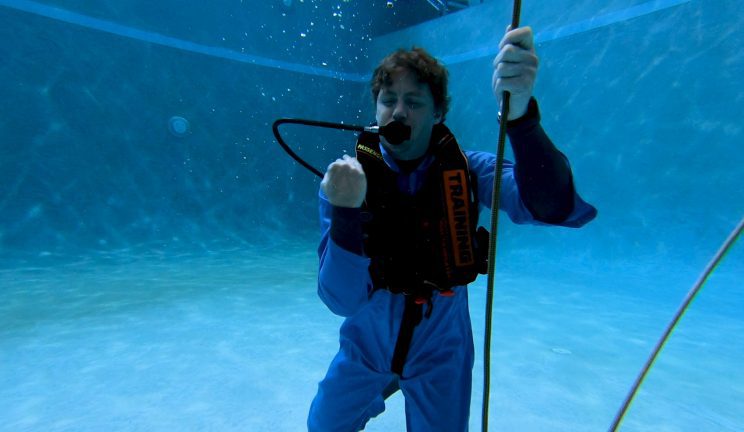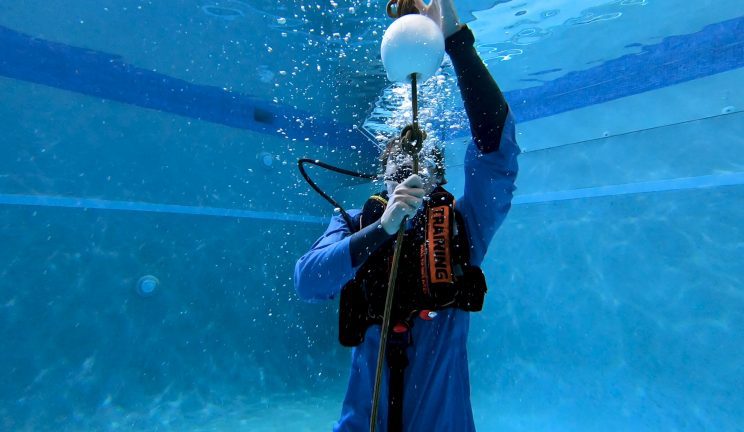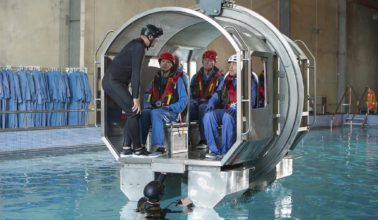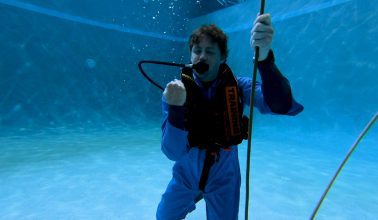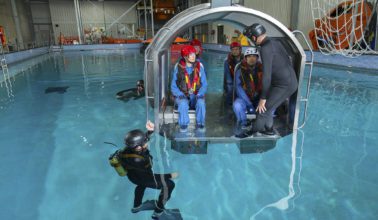Utilise Emergency Breathing System Perth · Melbourne · Darwin
For Aviation Personnel
The purpose of ERGT Australia’s Utilise Emergency Breathing System for the Aviation Industry (AVI UEBS) course is to provide personnel with the skills and knowledge to utilise an EBS. This training is applicable across the Australian aviation industry in a variety of contexts including recreational and commercial operations.
Personnel undertaking this training are typically employed by companies who provide helicopter services that fly over water. They will require aircrew and/or passengers to be trained in how to survive in the event of a downed aircraft. These aircraft movements are inherently hazardous and aircrew and their passengers are at risk particularly flying over water in all weather and climatic conditions.
Learning Outcomes
The expected learning outcomes for the Nationally Recognised Training unit AVIF0039 Utilise emergency breathing system are:
- Prepare an EBS for use
- Operate an EBS
- Complete EBS post-operational procedures
ERGT Desired Skills and Knowledge
In order for ERGT to deliver the training and assessment in the timeframe specified, it is desirable (but not mandatory) that trainees come to the course with knowledge and experience in either helicopters or fixed-wing aircraft. Trainees should be compliant with the operator’s CASA approved training and checking system. This includes the
aircrew member’s emergency procedure proficiency training. Trainees should be familiar with their own company’s aircraft in particular the inflight emergency procedures as well as having completed the following company-specific workplace training:
– Company induction training
– Organisational hazard identification and hazard reporting
– Risk assessment processes
If trainees do not have the desired skills and knowledge listed above, ERGT recommends trainees familiarise themselves with the generic proficiencies and standards in accordance with the Civil Aviation Safety Authority (CASA) Schedule 2 Part 61 Manual of Standards Instrument 2014.
Medical and Health Standards
A current offshore or industry equivalent medical is required for this course. Please refer to the ERGT Medical Form for accepted medicals and requirements.
Additional Information
There is an increased risk of decompression sickness if you fly at altitude after breathing compressed air underwater. As per the Divers Alert Network (DAN) published Revised Flying After Diving Guidelines for Recreational Diving – May 2002, a minimum pre-flight surface interval of 12 hours is recommended. Trainees should take this into consideration when arranging for travel after course completion and refer to their company Health and Safety department for further advice.
Additional Requirements
Government-issued photo identification and a valid USI are required for course registration.
Please bring swimwear and towel for in-water activities.
Structure & Assessment
This course is delivered through classroom presentations, group discussion and practical demonstrations and exercises. Trainees will demonstrate their competence through written and practical assessment.
Skills Maintenance
In alignment with industry expectations and to ensure ongoing competence and capability ERGT recommends skills maintenance be conducted every 2 years.
Authority / Regulator
Nationally Recognised Training is regulated by the Australian Skills Quality Authority (ASQA), which is the national regulator for Australia’s vocational education and training sector.
†No GST applicable
*Price Includes GST
+Price includes GST / ^No GST applicable
